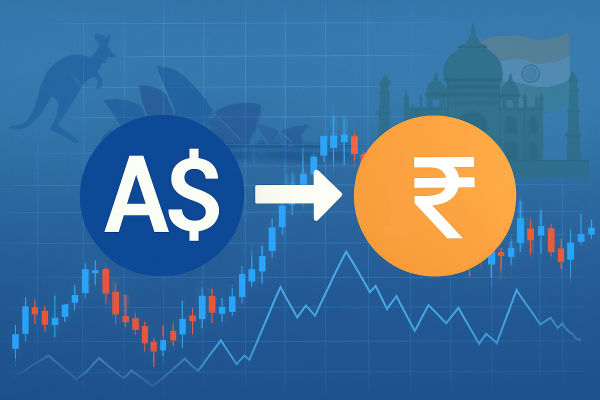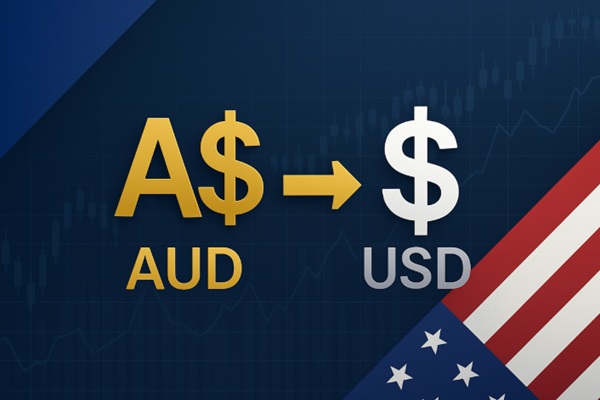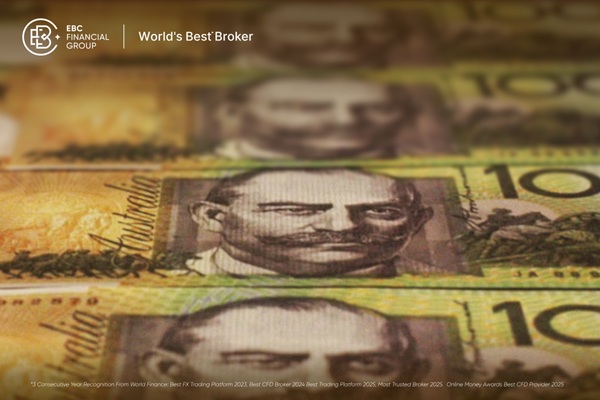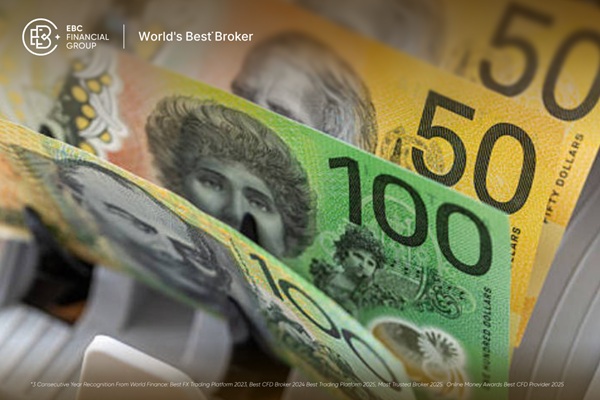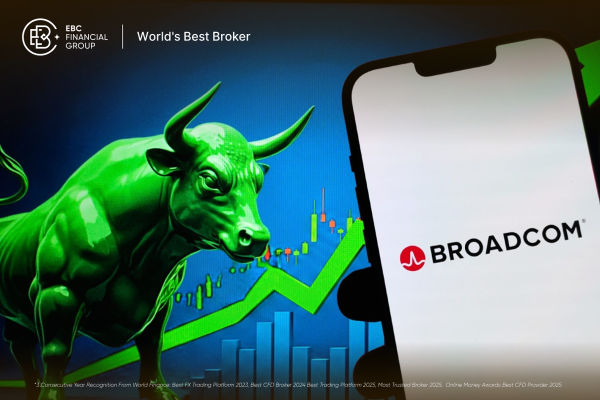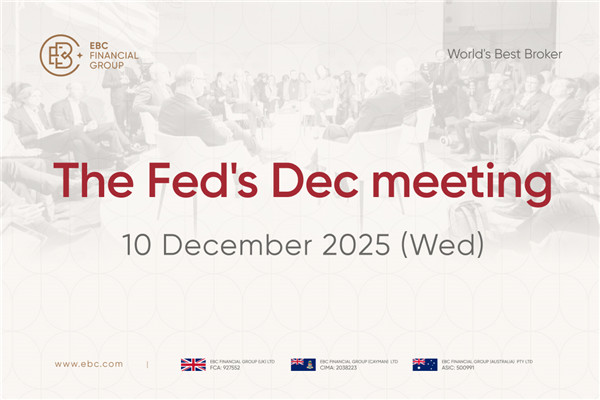Amid heightened volatility in global forex markets, the Australian Dollar (AUD) has surged significantly against the Philippine Peso (PHP) in 2025. After averaging around ₱36.36 per AUD in early 2025, recent figures show the pair climbing to highs near ₱37.53 in July, marking a year-to-date increase of approximately 3.6‑4.1 %.
With forecasts predicting further appreciation (possibly reaching ₱40 by year-end), understanding the drivers behind this move is vital for investors, businesses, and traders alike.
This article explores the forces at play and examines their implications for the remainder of 2025.
Latest AUD to PHP Exchange Rate and Trends
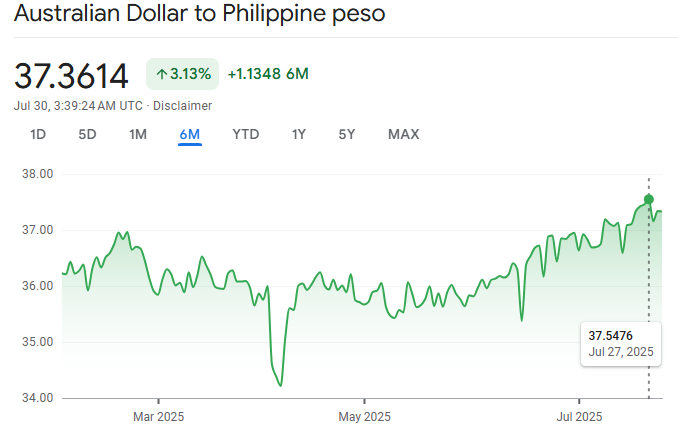
The latest reports indicate that as of July 29, 2025, 1 AUD equals ₱37.361, representing a 3.60% increase compared to early 2025 levels. The rate reached its highest point of ₱37.547 on July 27, marking the peak for mid-2025, while the lowest point for the year was ₱34.281 on April 8.
Monthly averages show the pair swinging from ₱36.94 in December 2024 down to ₱35.70 in April, before rebounding past ₱36.65 by June.
Reports highlight weekly variability, with rates ranging from ₱37.236 to ₱37.584 in late July, suggesting sustained elevated valuations.
Why Is the AUD Strengthening Against the PHP?
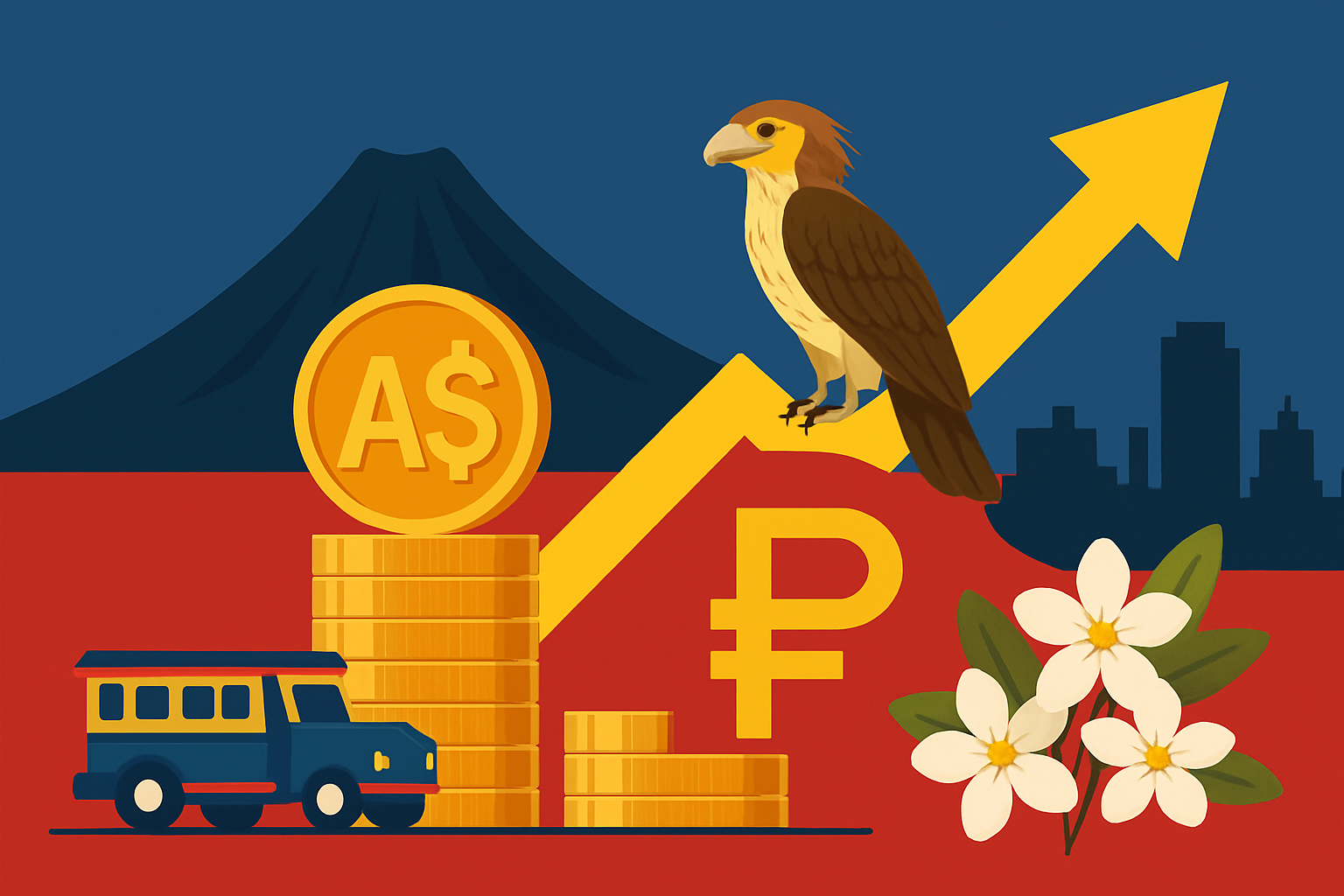
1. Commodities Boom & Australian Export Strength
Australia's economy remains heavily tied to commodities. As prices for iron ore, coal, and LNG strengthen, export revenues rise, supporting demand for AUD. With improved terms of trade, foreign investors are attracted to Australian assets, driving currency appreciation.
2. Interest Rate Premium: RBA vs BSP
The Reserve Bank of Australia (RBA) maintains policy rates near 4.35%, while the Bangko Sentral ng Pilipinas (BSP) is cutting rates modestly toward 4.75% by year-end, continuing a dovish bias.
This differential makes AUD-denominated assets more attractive, increasing carry flows into Australia.
3. Positive Risk Sentiment & Global Flows
Market optimism, fueled by upbeat corporate earnings, trade deal developments, and U.S. equity strength, led to rising risk appetite, boosting both Asian equities and commodity currencies such as the AUD.
4. Weakness in the Philippine Peso / USD Outlook
Optimists forecast USD/PHP climbing toward 55 by Q3‑Q4 2025, implying PHP weakness alongside AUD gains. Soft Philippine inflation (~1.8 %) allows BSP rate cuts, further undercutting peso strength.
AUD to PHP Forecast: How High Can AUD/PHP Go in 2025?
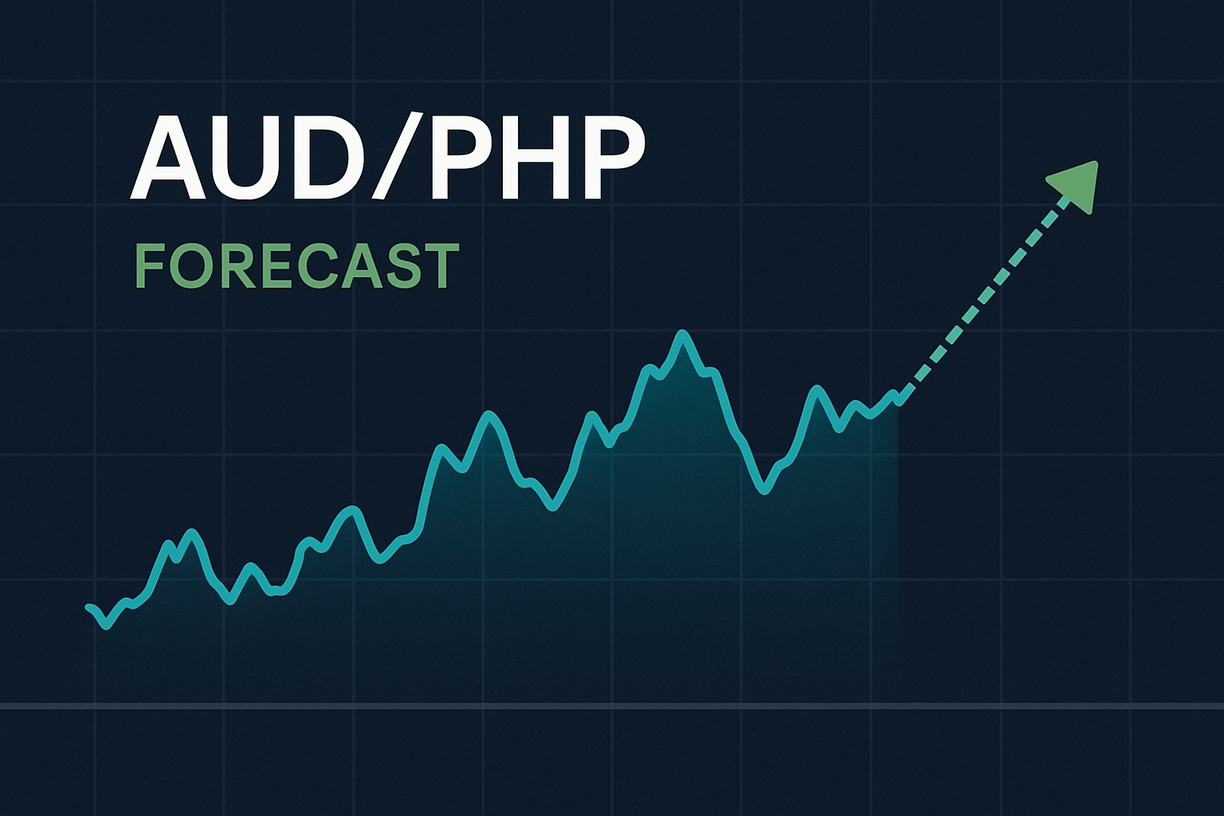
Several forecasters expect AUD/PHP to average ₱38–₱39 by year-end, with upside potential toward ₱40.10–₱41.22 into 2026. Analysts anticipate a 7.3% increase from the current mid-₱37 levels, while forecasters estimate ₱37.69 in August, increasing to ₱38.89, with a monthly average of approximately ₱37.92.
Other analysts forecast rates between ₱37.97 and ₱39.13 by the year's conclusion, averaging around ₱38.59.
Key Supporting Drivers
1) Commodity Tailwinds & Terms‑of‑Trade Effects
Australia's export strength supports AUD demand, while rising commodity prices improve its trade balance. These factors drive external capital flows and improve investor sentiment toward AUD assets.
2) Yield Differentials & Policy Divergence
Increased demand for AUD assets resulting from the RBA's stronger position, in contrast to the BSP's accommodative approach, attracts capital into Australia and diminishes the PHP's value. Low Philippine inflation enables rate reductions that widen this differential.
3) Risk-On Sentiment & Regional Growth Outlook
Global equities rally and recent trade optimism drive risk appetite in Asia, favouring currencies such as AUD. Conversely, investors are wary of peso vulnerability amid regional impacts of global headwinds.
4) Philippine Macro Headwinds
Despite containing inflation, the Philippines faces external pressures. Indicator signals slower FDI and remittance risks (with U.S. remittance tax proposals) as potential drags on the peso.
What Could Change the Outlook and What to Monitor Going Forward?

Domestic or international shocks, including a decline in commodity prices, strength of the U.S. dollar, political turmoil in the Philippines, or changes in investor risk appetite, may negate AUD increases.
If BSP abruptly hikes rates or inflation surges in the Philippines, peso strength may dampen AUD/PHP rallies.
As to future rate volatility, keep watch over:
Philippine inflation, GDP growth, and BSP policy decisions.
Australian commodity exports, terms-of-trade shifts, and RBA communication.
Global investor sentiment and the strengthening of the U.S. dollar.
Technical support levels: if AUD/PHP breaks below ₱36 support, the trend may weaken; above ₱38, it may accelerate.
Conclusion
In conclusion, the audacious climb of AUD/PHP in 2025 reflects a blend of Australia's commodity-led strength, favourable interest rate differentials, and peso vulnerabilities tied to inflation and policy.
With a projected rise toward ₱40–₱41 by year-end or early 2026, expectations for further gains remain intact. However, as always in forex, shifting central bank stances, trade flows, and global sentiment would disrupt current trends.
Disclaimer: This material is for general information purposes only and is not intended as (and should not be considered to be) financial, investment or other advice on which reliance should be placed. No opinion given in the material constitutes a recommendation by EBC or the author that any particular investment, security, transaction or investment strategy is suitable for any specific person.















